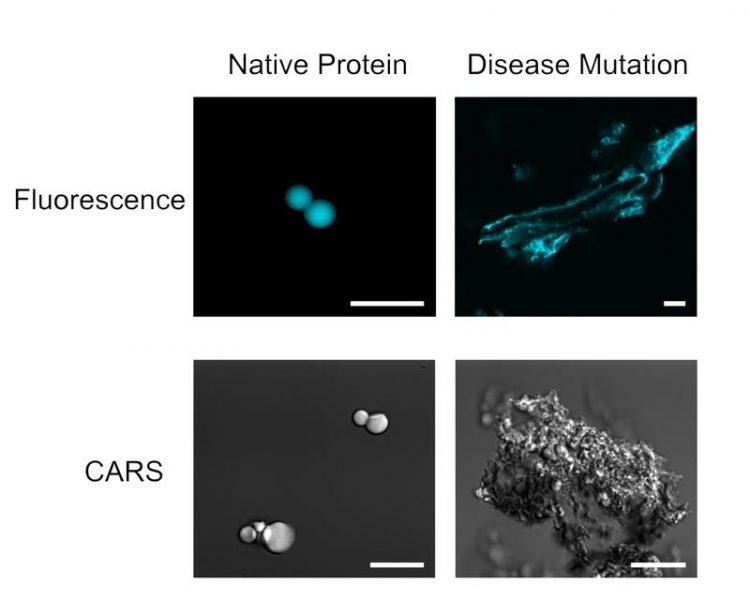Stressing out about granule proteins

Native and disease mutated RNP granule proteins. Scale bar is 20 Native and disease mutated RNP granule proteins. Scale bar is 20μm ©Parekh/MPIP
In the same way that a body contains functional organs, every cell contains functional organelles, each with a specific task. In the cell different organelles are generally separated from the surrounding cellular milieu by membranes or barriers.
RNP (ribonucleotide) granules are an exception: this class of cellular organelles – containing RNA and disordered proteins – that have recently gained much attention, as they are so-called “membraneless organelles” – in contrast to almost every organelle in our cells.
The molecular mechanisms that regulate their formation and stability are only now being elucidated. Moreover, certain mutations in proteins that make up RNP granules lead to known neuropathologies such as amyotrophic lateral sclerosis (ALS), also known as Lou Gehrig’s disease.
The Parekh and Fawzi team will create a novel molecular analytical toolbox and experimental protocols to quantify the protein-protein interactions and structural changes in RNP granules using a multiscale spectroscopic approach: from the single amino acid to whole protein level.
The team will use a combination of in-cell vibrational and FRET imaging combined with in-cell NMR spectroscopy on granule proteins to examine the changes in protein structure and dynamics both in normal and disease-associated mutations.
“We are really excited to bring our different backgrounds to this very interesting and important problem. Our complementary tools will help clarify the molecular interactions that underlie and stabilize native stress granules and their disease mutants. It’s exciting that our project was selected in the highly competitive HFSP process,” said Parekh.
The Human Frontier Science Program Organization (HFSPO) awards some $30 million to support the top 3 percent of grant applications it receives. The 31 winning teams of 2018 were selected from a year-long selection process that started with more than 770 applications. More information on HFSP grants can be found at http://bit.ly/icCsdh.
Media Contact
More Information:
http://www.mpip-mainz.mpg.deAll latest news from the category: Life Sciences and Chemistry
Articles and reports from the Life Sciences and chemistry area deal with applied and basic research into modern biology, chemistry and human medicine.
Valuable information can be found on a range of life sciences fields including bacteriology, biochemistry, bionics, bioinformatics, biophysics, biotechnology, genetics, geobotany, human biology, marine biology, microbiology, molecular biology, cellular biology, zoology, bioinorganic chemistry, microchemistry and environmental chemistry.
Newest articles

First-of-its-kind study uses remote sensing to monitor plastic debris in rivers and lakes
Remote sensing creates a cost-effective solution to monitoring plastic pollution. A first-of-its-kind study from researchers at the University of Minnesota Twin Cities shows how remote sensing can help monitor and…

Laser-based artificial neuron mimics nerve cell functions at lightning speed
With a processing speed a billion times faster than nature, chip-based laser neuron could help advance AI tasks such as pattern recognition and sequence prediction. Researchers have developed a laser-based…

Optimising the processing of plastic waste
Just one look in the yellow bin reveals a colourful jumble of different types of plastic. However, the purer and more uniform plastic waste is, the easier it is to…



